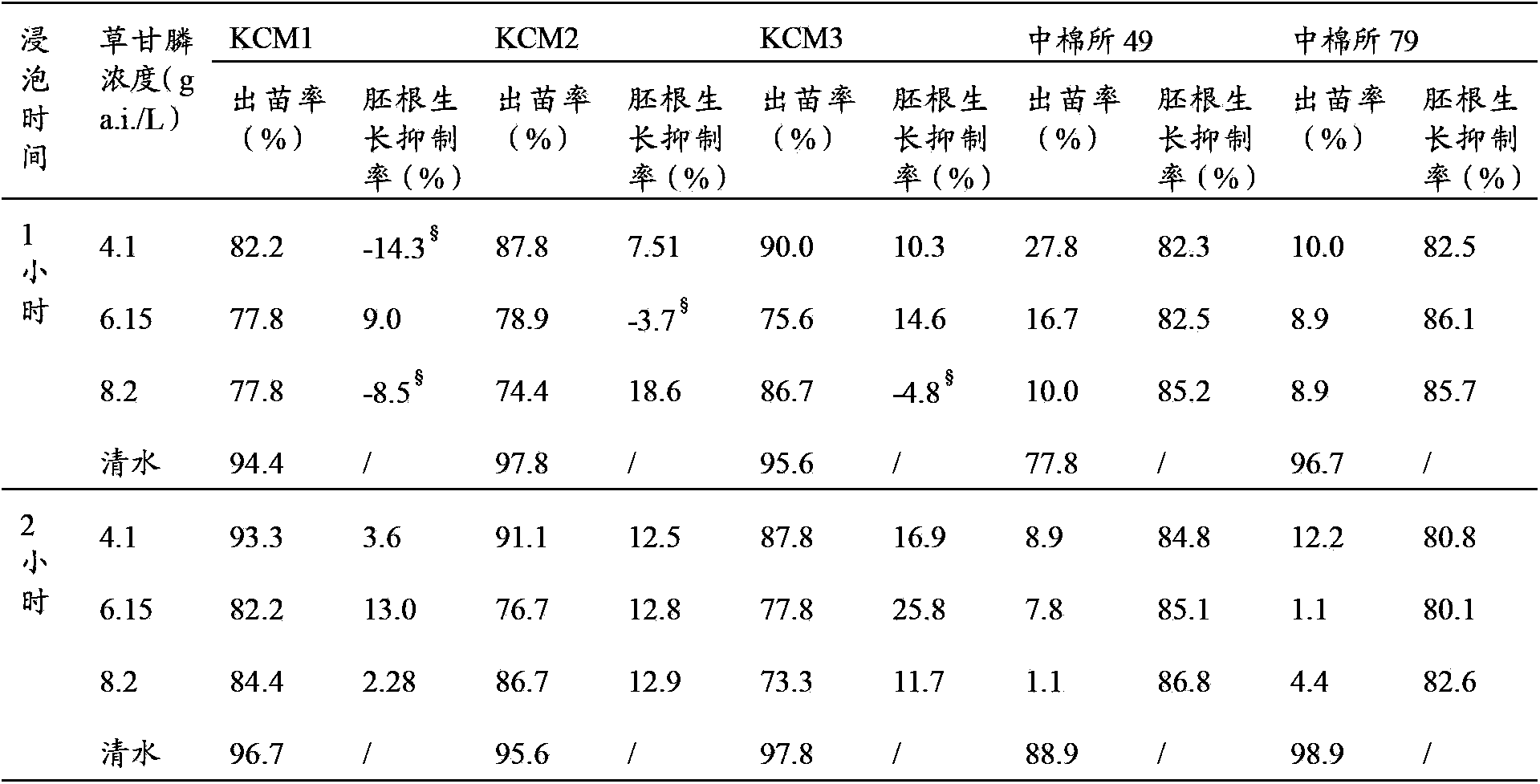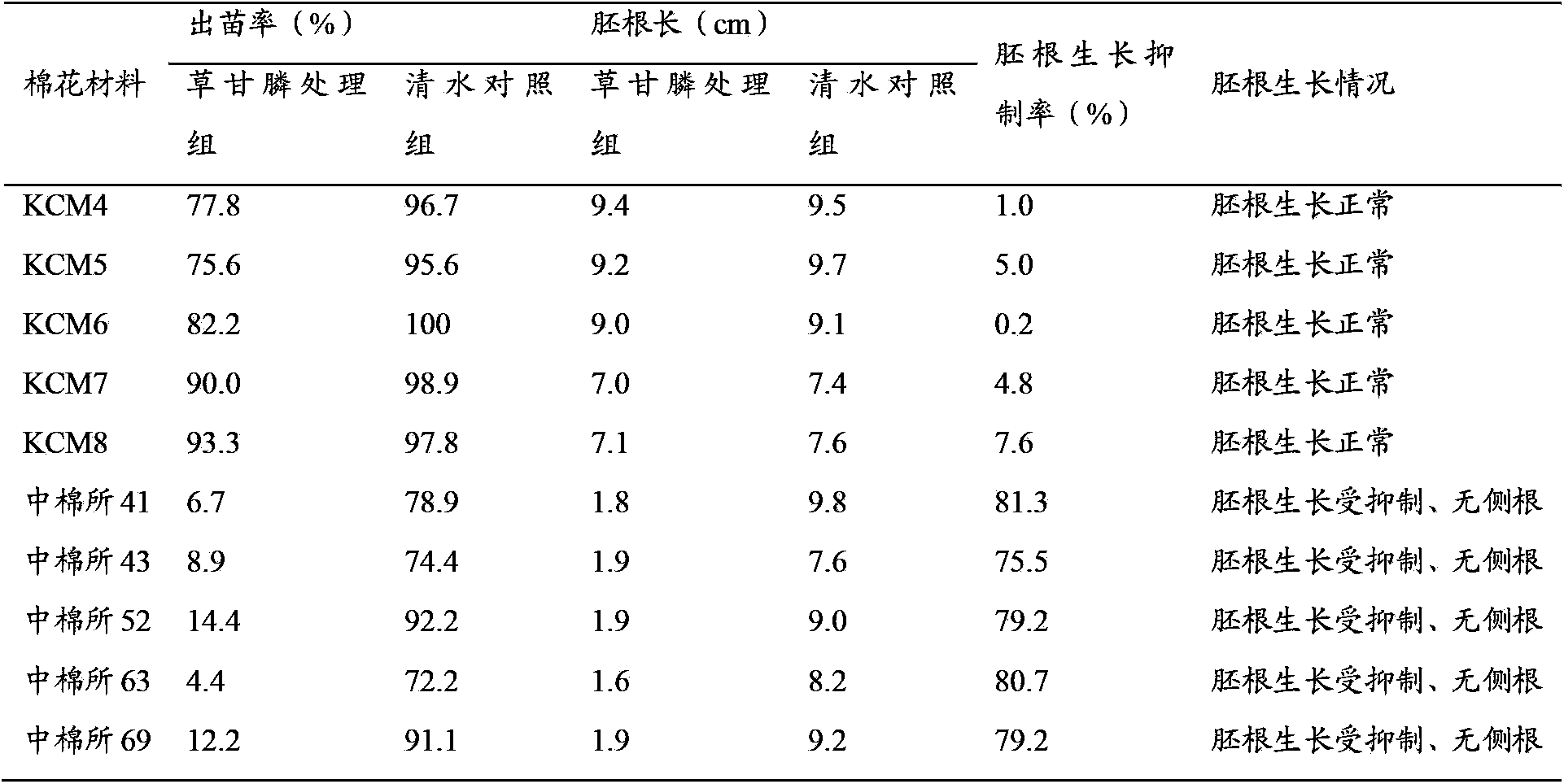Method for identifying glyphosate resistant cotton rapidly
A technology of anti-glyphosate and identification method, which is applied in horticultural methods, botanical equipment and methods, seed and rhizome treatment, etc., can solve the problems of expensive molecular detection instruments and reagents, occupy a large space, and be difficult to carry out, and achieve results The effect of good consistency, small space occupation and small workload
- Summary
- Abstract
- Description
- Claims
- Application Information
AI Technical Summary
Problems solved by technology
Method used
Image
Examples
Embodiment 1
[0040]Glyphosate-resistant cotton materials (KCM1, KCM2, KCM3) and non-glyphosate-resistant cotton materials (Zhongmian Institute 49, Zhongmian Institute 79) were used at concentrations of 4.1ga.i. / L and 6.15ga.i. / L and 8.2ga.i. / L glyphosate solution soaked for 1 hour and 2 hours, the experimental results are listed in Table 1.
[0041] Table 1 The emergence rate and radicle growth inhibition rate of cotton seeds to be tested after being treated with different concentrations of glyphosate for different times
[0042]
[0043] The negative value of the radicle growth inhibition rate indicated that the radicle growth of the glyphosate treatment group was greater than that of the water control group, indicating that the glyphosate treatment had no effect on the radicle growth.
[0044] It can be seen from Table 1 that after soaking the tested cotton seeds in 4.1g a.i. / L glyphosate solution for 1-2 hours, the emergence rate of the three glyphosate-resistant cottons was 82.2%-9...
Embodiment 2
[0049] Glyphosate-resistant cotton materials (KCM4, KCM5, KCM6, KCM7, KCM8) and non-glyphosate-resistant cotton materials (China Cotton Institute 41, China Cotton Institute 43, China Cotton Institute 52, China Cotton Institute 63, and China Cotton Institute 69 ), soaked with 8.2g a.i. / L glyphosate solution for 1 hour, and the experimental results are listed in Table 2.
[0050] Seed emergence rate, radicle length and radicle growth inhibition rate of cotton seeds to be tested after table 2 treatment
[0051]
[0052] According to the data in Table 2, it can be seen that for non-glyphosate-resistant cotton materials, glyphosate treatment significantly affected the emergence rate (the emergence rate decreased from 72.2%-92.2% to 4.4%-14.4%), and the radicle growth inhibition rate was as high as 75.5%-81.3%; while for glyphosate-resistant cotton materials, glyphosate treatment had little effect on the emergence rate (the emergence rate decreased from 95.6%-100% to 75.6%-93.3%)...
PUM
 Login to View More
Login to View More Abstract
Description
Claims
Application Information
 Login to View More
Login to View More - R&D
- Intellectual Property
- Life Sciences
- Materials
- Tech Scout
- Unparalleled Data Quality
- Higher Quality Content
- 60% Fewer Hallucinations
Browse by: Latest US Patents, China's latest patents, Technical Efficacy Thesaurus, Application Domain, Technology Topic, Popular Technical Reports.
© 2025 PatSnap. All rights reserved.Legal|Privacy policy|Modern Slavery Act Transparency Statement|Sitemap|About US| Contact US: help@patsnap.com


